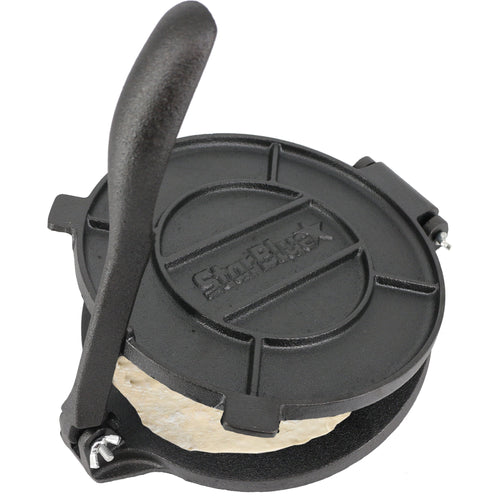You didn’t misread anything. Pizza is not the national food of Italy. If you ask a local Italiano, anyone is going to tell you the same thing, ‘Pizza is just from Napoli (a.k.a. Naples). Nobody has pizza every day’ with a condescending tone. I was surprised by this counterintuitive statement.
Now here comes the mystery. What causes its popularity across the Italian peninsula, and across Europe? And the prevalence of Napoli pizza has led us to believe that it represents Italy as a general truth.
Naples: Vibrant Romance Ripped by Conflicts
A boy went back to Napoli because he missed the scenery.
The native dancers, and the charming songs. But wait a minute, something's wrong…
If you know this song, you must be also a fan of Sophia Loren. In Pane, Amore E… (Bread, Love and…), the romance comedy mesmerises you with seafood, sunshine, and the spectacular Amalfi coast (and mostly likely of the sensuality of Sophia Loren).
Sounds like a good holiday destination, right? But why does it end up in poverty and mass immigration? Unfortunately, the Southern Italy had been war-torn since the late 19th century. The ceaseless conflicts of independence and unification of Italy in 1800s, as well as the two world wars left its economy stagnant. It resulted in the outpouring the population to Europe and America.
After the Second World War, the Italian economy started reviving. The movie illustrates this post-war honeymoon period. Nevertheless, the present-day Naples’s development is relatively slow compared with its European counterparts.

(Image Attribution: IlSistemone, Public domain, via Wikimedia Commons)
‘La Cucina Povera’ (the cuisine for the poor): Embracive Nature of Pizza
Nowadays, the homeland of pizza, Naples is generally considered as a poverty-ridden and underdeveloped city. According to the OECD figures published in 2020 (See Ref. 1), the GDP per capita of the southern Italian city is below the average amongst other OECD cities.
If you travel across Europe, you will find that pizza is an economical choice alongside kebabs and burgers. The economy was the main driving force behind this norm. During late 19th century and early 20th century, four million of Neapolitans emigrated to different parts of the world (Ref 2). For the early 20th century, urbanisation and industrial development was centralised in the Central and Northern regions, where the southerners moved for the job opportunities (Ref. 3). Natives of the Naples brought the cuisine culture to the other parts of Italy.
Besides, the ingredient of pizza consists of flour, yeast, salt and water only. Toppings are lavished with tomatoes, basils, and cheese. Henceforth, it adapts to local food cultures. For example, the infamous pineapple pizza is a variation in Hawaii.
The simplicity is exhibited on the two traditional types of Neapolitan pizza, i.e. marinara and the well-known Margherita which were put on the dining table of native Neapolitans during the Ancient Roman period.

Pizza Marinara (Image Attribution: Ruthven, CC0, via Wikimedia Commons)

Pizza Margherita (Image Attribution: Lombroso, CC BY-SA 4.0 <https://creativecommons.org/licenses/by-sa/4.0>, via Wikimedia Commons)
Southern Italy: a region blessed with the Sun
Despite the uneven national development, the Southern Italians are particularly proud of their pasta and pizza. They make fun of the northerners because of their food made from low-quality wheat. The warm climate of the Mediterranean makes favours the agricultural industry. The best crops are lemons, oranges, olives and the grains.
Your own style of Pizza
As mentioned, pizza is the Neapolitan culture adept to diversity. Why not giving it a try? With a large pan and an oven everyone can do it.
The traditional way of cooking pizza is by placing the dough into a wood-fire oven. Its shortcoming rests on the uneven distribution of heat, which leaves the same piece of pizza charred and uncooked. The risk of burning yourself is also an unneglectable concern.
Everyone is entitled to the safety of the cooking. Even a professional chef like Gordon Ramsay failed to avoid from getting burnt by sizzling handles (it hurts so bad from his reaction). It requires the oven temperature as high as 400 to 500 degree Celsius, which poses a safety risk for us.

(Image Attribution: gordan-ramsay-15.gordanramsaysubmissions. https://www.flickr.com/photos/54397539@N06/5034955830/in/photostream/)
In order to optimise the pleasure of cooking, it is commendable to choose the brands which prioritise consumers’ safety. A good pan should ensure the even transmission of heat and safety at the same time. The pizza pan produced by StarBlue exemplifies the trustworthiness as kitchen brand. Your hands are protected by the silicone handles. Apart from it, cast iron is a time-enduring and reliable material for cooking pans. Unlike the steel pans, cast iron does not break easily.

Your StarBlue Questions, Answered.
From cooking tips to product care, find quick solutions right here.
Money Back Gurantee and Replacement?
Our money-back guarantee is automatically extended to 4 months when buying on our Official website. Other official selling platforms (e.g. Amazon) have 2 months where possiblility to extended to 4 months by Registration.
Which countries does StarBlue deliver to, and how fast is the shipping?
StarBlue products are currently delivered within the United States only through our partnership with the Amazon Fulfillment Network. This ensures reliable delivery within 2–5 business days to all US addresses.
For customers outside the US, you can conveniently purchase StarBlue products through Amazon’s international stores:
🇨🇦 Amazon Canada
🇬🇧 Amazon UK
🇩🇪 Amazon Germany
🇫🇷 Amazon France
🇮🇹 Amazon Italy
🇪🇸 Amazon Spain
🇦🇺 Amazon Australia
Where to find the recipe Ebook?
Electronic Book is available by scanning QR code on box or user manual of your item.
If you cannot find it, simple submit the request here or email us cs@starblue.co
What if the item is damaged due to delivery?
We're always here to help! Feel free to contact us by here or email us at cs@starblue.co anytime.
How to make perfect rotis using StarBlue Roti Maker?
We made an easy video for an easy follow through steps.













Leave a comment